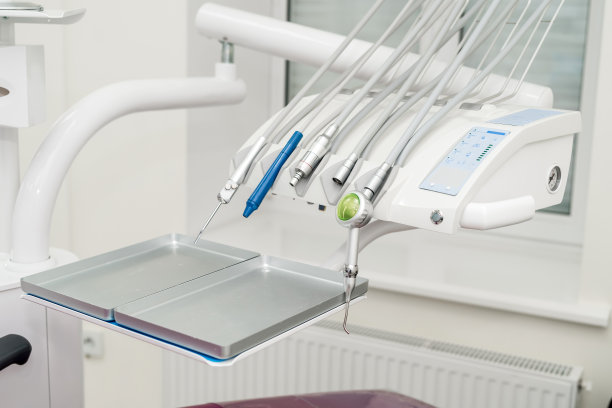The Essential Guide to Extracting a Tooth Safely and Successfully for Patients and Dentists
Summary: Tooth extraction is a routine dental procedure that can cause anxiety in both patients and dentists. This essential guide offers comprehensive insights into safely and successfully extracting a tooth, focusing on preparation, techniques, recovery, and post-extraction care. It aims to equip both patients and dentists with the knowledge necessary to navigate the complexities of tooth extraction confidently. By adhering to best practices, proper communication, and understanding the recovery process, both parties can ensure a smooth experience. Ultimately, this guide serves as a valuable resource in promoting healthy dental practices and alleviating fears associated with dental extractions.
1. Preparing for Tooth Extraction Effectively

Preparation is critical for a successful tooth extraction. For dentists, this begins with a thorough examination of the patients medical history. Understanding medications, allergies, and underlying health issues can significantly influence the approach to extraction. For patients, it is equally important to communicate effectively with the dentist about any concerns they might have.
Another essential aspect of preparation is imaging. Dentists often use X-rays or 3D imaging to assess the tooth and surrounding bone structure. These images provide critical information about the tooths position and the complexity of the extraction, allowing dentists to plan the procedure accurately. Patients should understand that this step is vital for ensuring a safe and efficient extraction process.
Finally, discussing sedation options is a crucial part of the preparation phase. Dentists can offer various levels of sedation based on the patients anxiety levels and the extractions complexity. Knowing what to expect during the procedure can help ease the patient’s nerves, leading to a more relaxed and successful extraction experience.
2. Techniques for Successful Tooth Extraction
Employing the right techniques during tooth extraction is essential for minimizing complications and ensuring patient comfort. Dentists can use two primary methods for extractions: simple extractions and surgical extractions. Simple extractions are typically performed on teeth that are visible and easily accessible, while surgical extractions are required for teeth that are broken, impacted, or lodged beneath the gum line.
Another important aspect of the technique is the use of local anesthesia. Administering the right amount of anesthesia ensures that the patient feels no pain during the procedure. Dentists must be skilled in not only delivering anesthesia but also in gauging its effectiveness throughout the extraction process, adjusting as necessary.
Finally, the dentist must employ proper post-extraction techniques to safeguard the extraction site and promote healing. This may include suturing the wound if necessary and providing the patient with essential care instructions. The thoroughness of these techniques can significantly impact the recovery process and overall outcome of the extraction.
3. Recovery Process After Tooth Extraction
Understanding the recovery process after a tooth extraction is vital for both patients and dentists. The first 24 hours are crucial as blood clots form at the extraction site. Patients should be advised to avoid strenuous activities and apply ice packs to minimize swelling. Dentists play a significant role in providing guidelines and recommendations during this critical recovery period.
Pain management is another crucial aspect of recovery. Dentists should discuss pain relief options, which may include over-the-counter medications or prescription painkillers. Educating patients about what to expect regarding discomfort and the importance of not ignoring pain can lead to a more manageable recovery experience.
Lastly, follow-up appointments are important for monitoring the healing progress. At these appointments, dentists can assess the extraction site for any signs of infection or complications. This not only ensures the patient’s well-being but also builds a trusting relationship between the patient and the dentist.
4. Long-term Care Following Tooth Extraction
After the initial recovery phase, long-term care becomes essential for maintaining oral health. Patients should be advised to maintain good oral hygiene practices, which include gentle brushing and rinsing with saltwater to keep the mouth clean and promote healing. Dentists should emphasize the importance of avoiding hard, chewy, or spicy foods during the initial healing period.
Additionally, patients may need to consider tooth replacement options, especially if a permanent tooth was extracted. Dentists should provide guidance on various options, such as dental implants, bridges, or dentures, to restore function and aesthetics to the patient’s smile. Understanding the importance of this step can aid in the patients long-term satisfaction with their dental health.
Lastly, regular dental check-ups should be encouraged to monitor overall oral health. Routine visits help ensure that no complications arise from the extraction and that the patient’s dental health is maintained in the long run. Establishing this practice can lead to better outcomes and more positive dental experiences.
In summary, the essential guide to tooth extraction emphasizes the importance of preparation, technique, recovery, and long-term care. By understanding these four aspects, both patients and dentists can work together to achieve successful outcomes. With effective communication and a focus on patient comfort, the process can be substantially improved for all involved.
This article is compiled by Vickong Dental and the content is for reference only.



